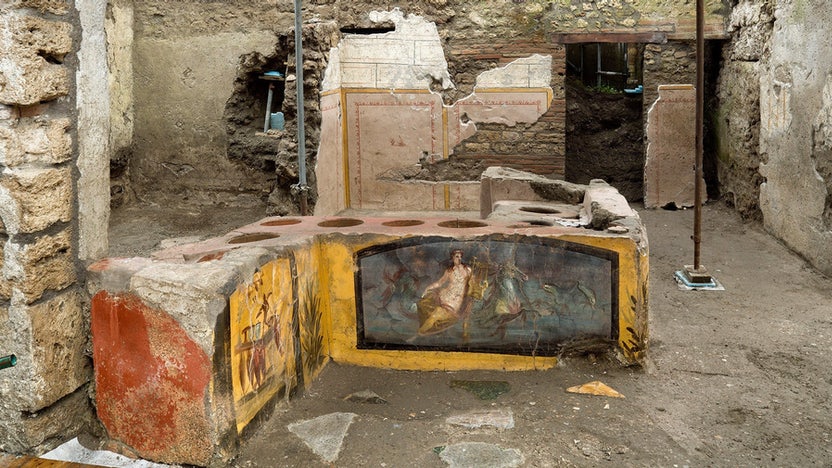I’m a sucker for anything archaeological. Throw in a list and I’m there!
And what better way to see this very average year off than with some good news?
This year, archaeologists found:
- a 4,000-year-old, single-cut oak coffin containing human remains in a water hazard on the Grimsby golf course
- a 3,400-year-old city near Luxor in Egypt, complete with mud-brick walls and rooms still filled with the remnants of daily life
- 500-Year-Old Venetian Beads in Alaska, that were probably moved east from Venice and across the Bering Strait, arriving in Alaska via Russia
- a well-preserved thermopolium, or food-and-drink stand, in Pompeii complete with the remains of food items like duck, swine, goat, fish, land snail and beans
- the stomach contents of The Tollund Man, who was probably hanged to death around 2,400 years ago, and his body exquisitely preserved in a Danish bog
- the first evidence of a Roman crucifixion in England, in the form of a nail lodged in the leg bone of a man who died in his late 20s or early 30s
- the first mummified foetus in the womb of a woman who died in Egypt 2,000 years ago
- hand and foot impressions near a hot spring on the Tibetan Plateau that were made between 169,000 and 226,000 years ago, predating the famous cave paintings at Lascaux and Sulawesi by over 120,000 years
- a wooden box from a Norwegian mountain pass that turned out to be between 386 and 546 years old, used to carry beeswax candles
- the most ancient known intentionally buried human in Africa — a child who was around 3 years old — dating to around 78,300 years ago
- Scandinavian culture arrived in North America 1,000 years ago, preceding Christopher Columbus’ accidental arrival by nearly 500 years.
Original article: The 11 Coolest Archaeological Finds of 2021
I talked about this with Danny Hoyland on West Bremer Radio on 1 January 2022 (but I took a break and then got really busy, so I’m late with this one too). Listen each week: Saturday 7.40 am, West Bremer Radio.

